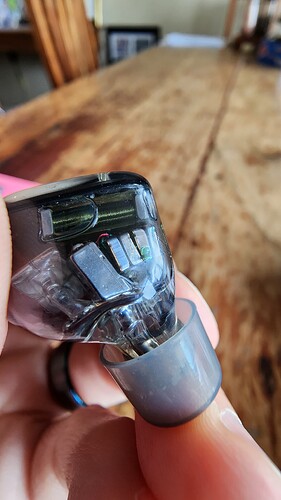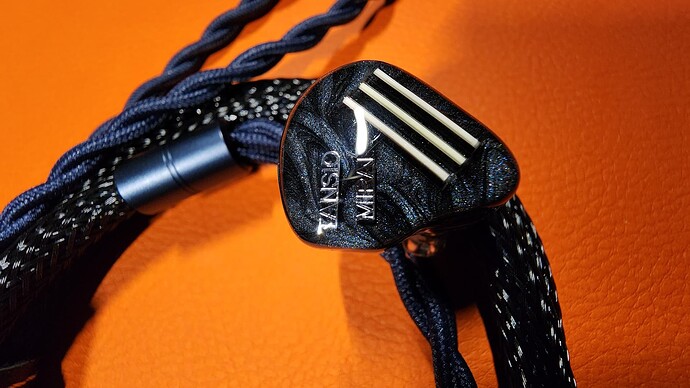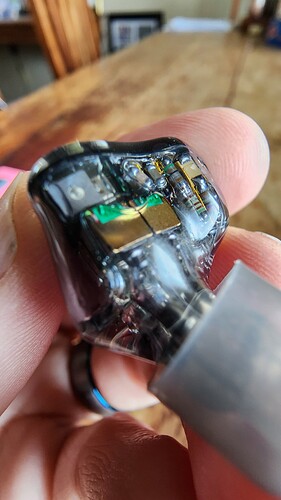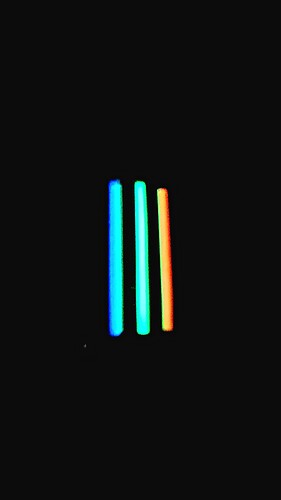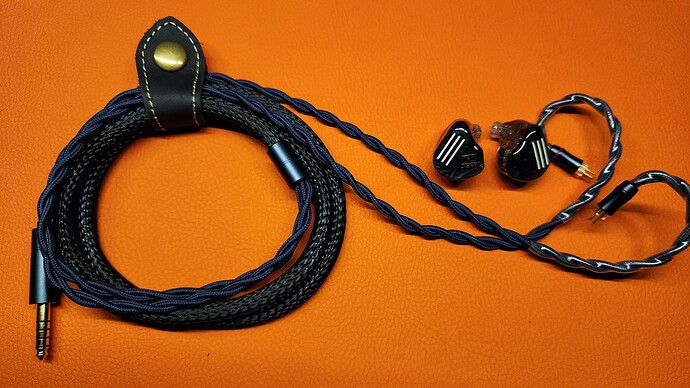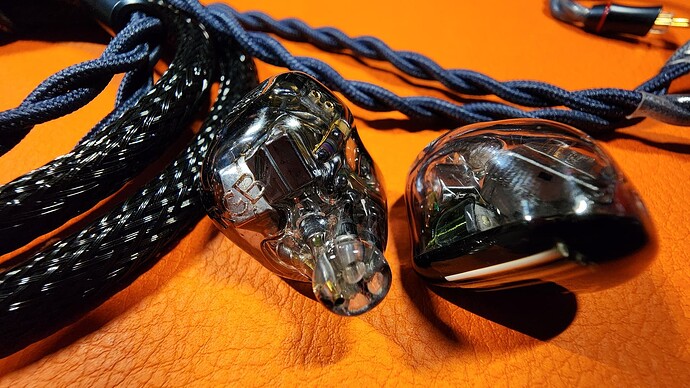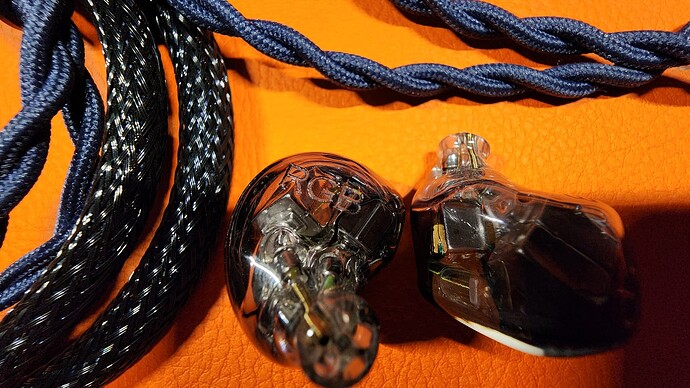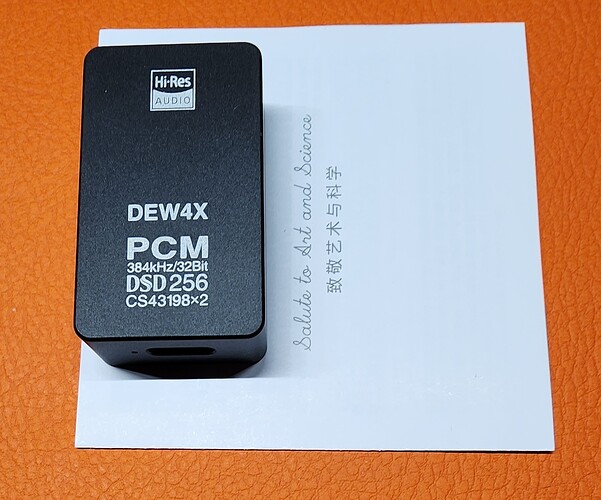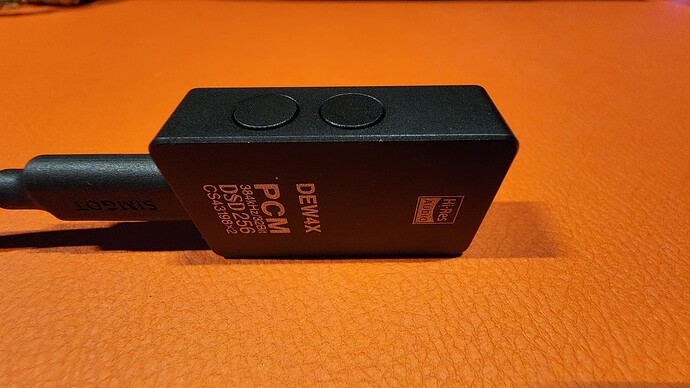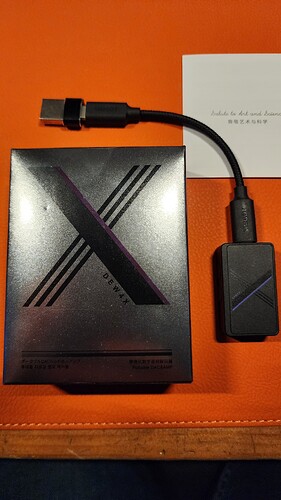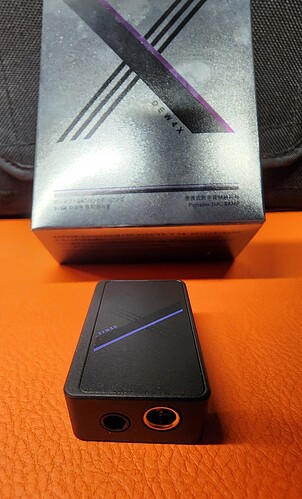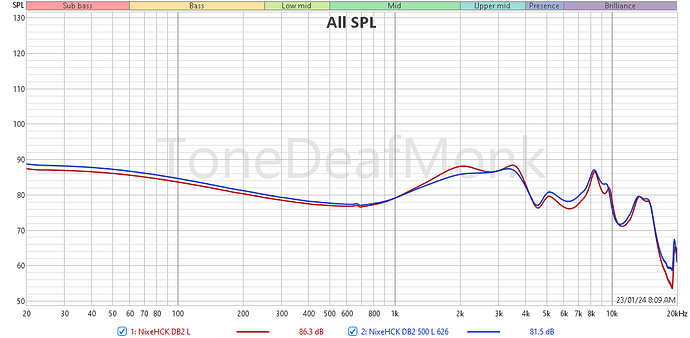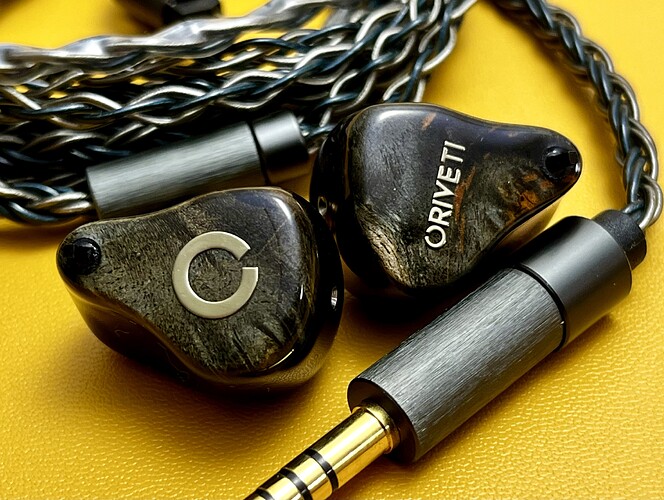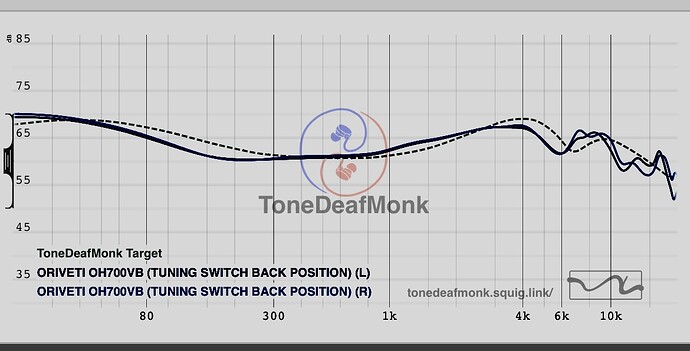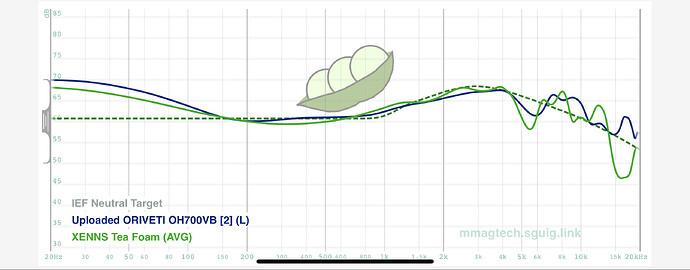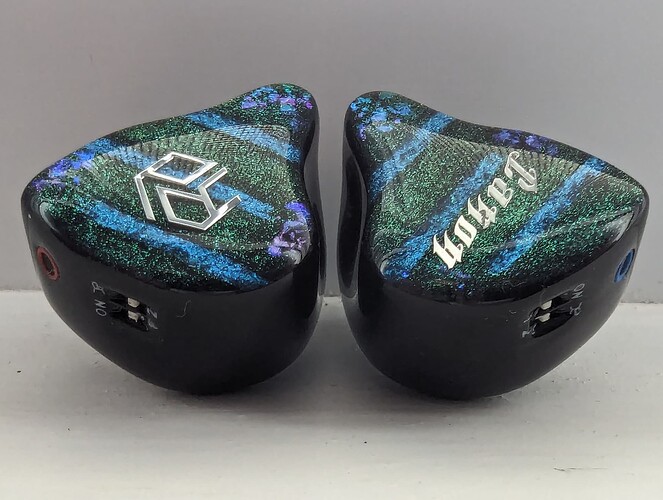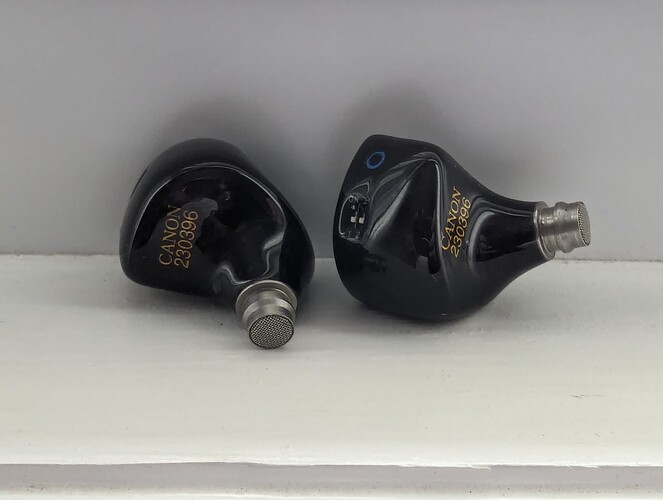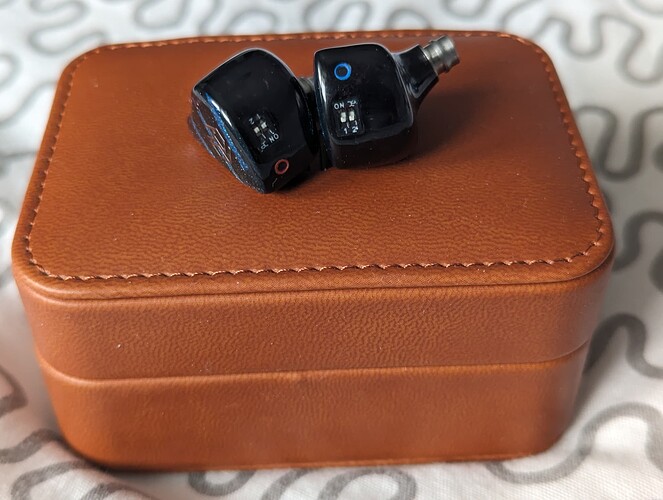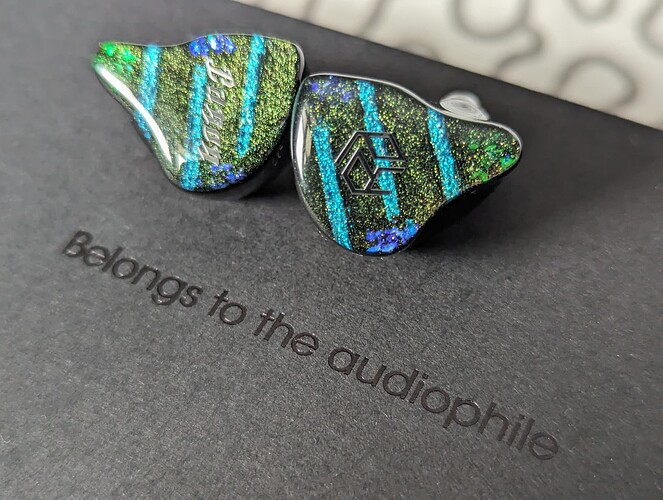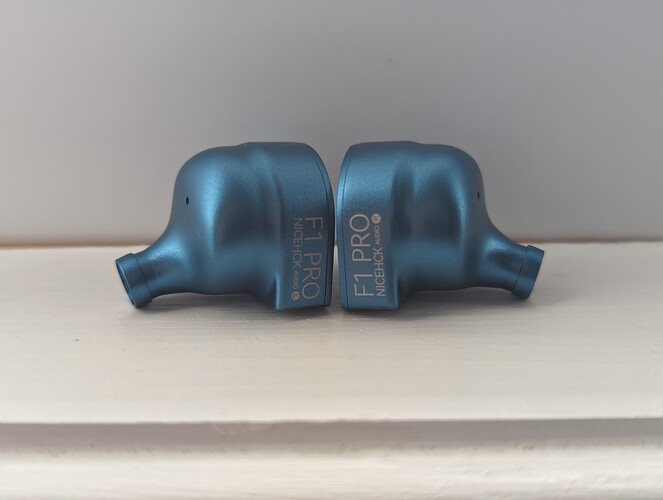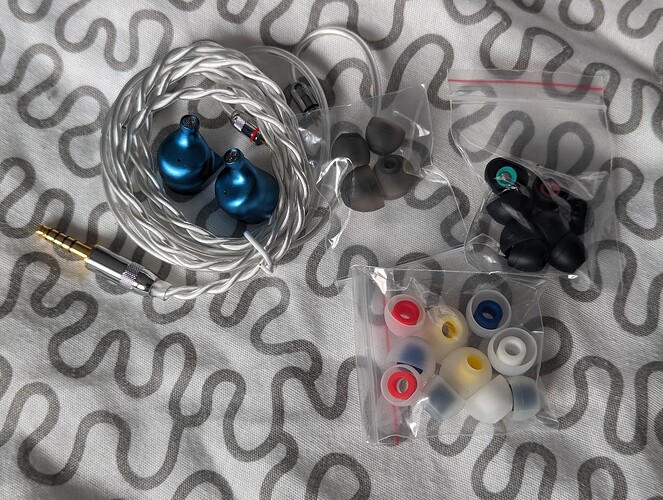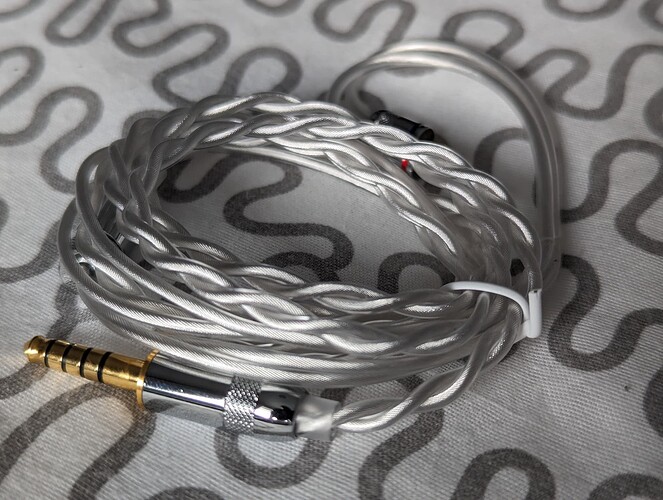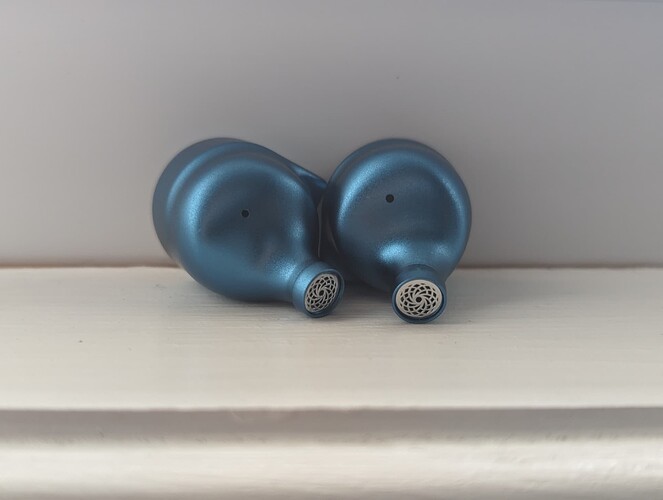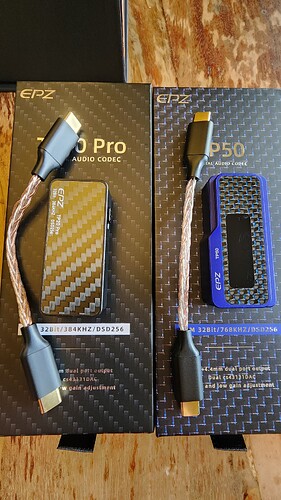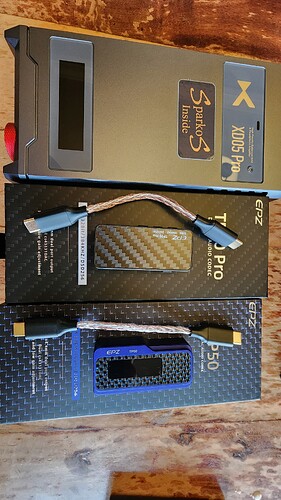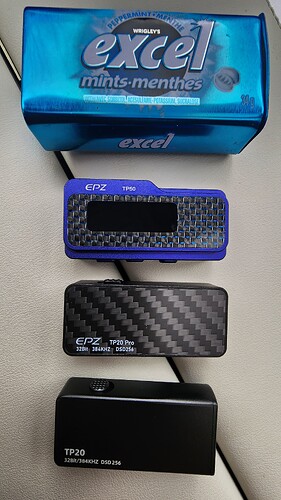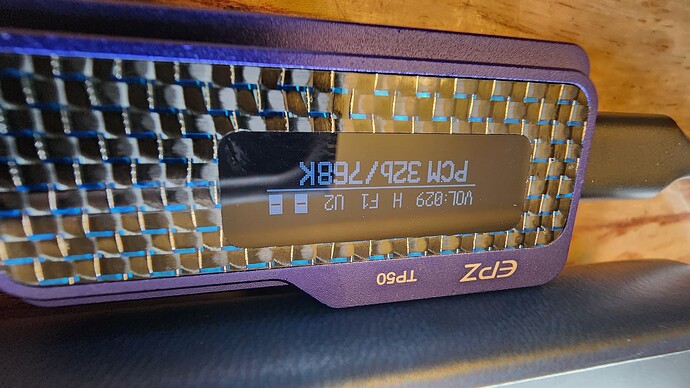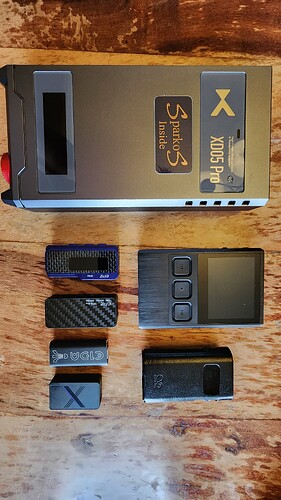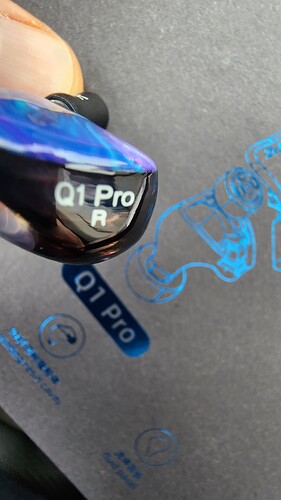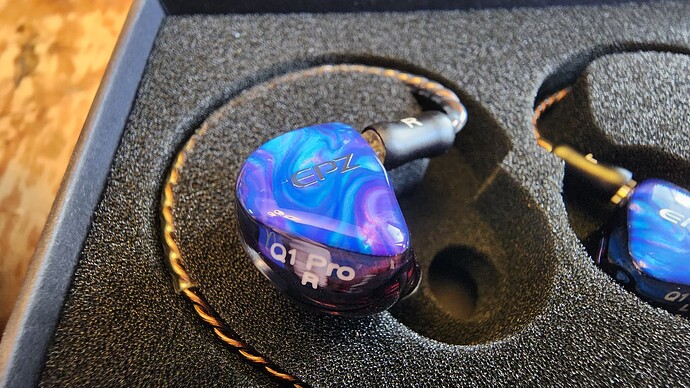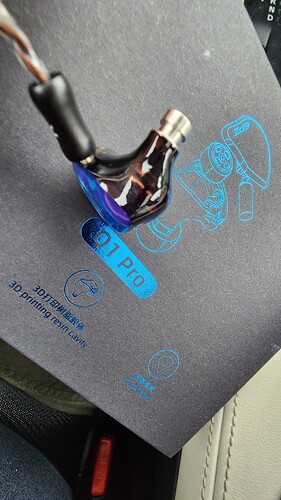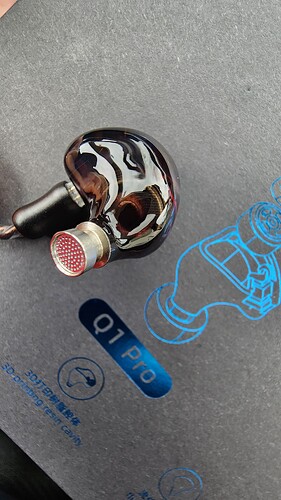ORIVETI OH700VB
6+1 Hybrid Driver Technology
1 10mm Dynamic Driver.
6 BA Drivers. 4 mids, 2 high.
Impedance: 12 Ohm
Frequency Response: 20 - 20000Hz
Sensitivity: 112±3dB/mW, 1000Hz
Preamble:
On behalf of myself and the other Canuck Audioholics, I pass along our sincere appreciation and thanks to Oriveti for providing the OH700VB for evaluation and review.
I received only the ear pieces and stock modular cable with 3.5mm 2.5mm and 4.4mm terminations.
Pros:
 High quality hand made resin shells are vented, smooth, and well finished.
High quality hand made resin shells are vented, smooth, and well finished.
Medium in size they fit my ears well. Mid point insertion depth facilitates a good seal and solid anchor.
 Nice quality modular cable with 3.5, 2.5, and 4.4mm terminations. Oriveti does not specify the composition of the cable.
Nice quality modular cable with 3.5, 2.5, and 4.4mm terminations. Oriveti does not specify the composition of the cable.
 Single tuning switch on the faceplate of each ear piece provides a sub bass boost.
Single tuning switch on the faceplate of each ear piece provides a sub bass boost.
 Tuning switch is easily accessible for “on the fly” adjustment.
Tuning switch is easily accessible for “on the fly” adjustment.
 Not source device fussy, sounds very good on all sources sampled.
Not source device fussy, sounds very good on all sources sampled.
 Drives easily and sounds good straight off phone. (iPhone 13, Qobuz)
Drives easily and sounds good straight off phone. (iPhone 13, Qobuz)
 Deep and rich, boomy bass. Sub focused.
Deep and rich, boomy bass. Sub focused.
 Smooth, clear and detailed upper mids. Not overly energetic. More intimate than spacious.
Smooth, clear and detailed upper mids. Not overly energetic. More intimate than spacious.
 Vocals are clear and articulate with natural and accurate tonality for both male and female.
Vocals are clear and articulate with natural and accurate tonality for both male and female.
 Bright airy highs, not the most detailed or resolving.
Bright airy highs, not the most detailed or resolving.
 Intimate head stage, with good imaging and layering.
Intimate head stage, with good imaging and layering.
Cons:
 Tuning switches are easy to unintentionally re-position when handling the ear pieces.
Tuning switches are easy to unintentionally re-position when handling the ear pieces.
 Mids and highs don’t easily reveal detail and resolution.
Mids and highs don’t easily reveal detail and resolution.
Sources:
I listened to the OH700VB using a few different source devices.
AK Kann Max, Hiby RS6 (R2R), Shanling M9 Ltd., iBasso DX320, iPhone 13.
I found the OH700VB to be easy to drive, and, not overly source fussy, or dependent.
While there were noticeable differences to the sound between each device, I found the OH700VB did not stray far from its tuning.
A bit more resolving and tighter bottom end on the Kann Max.
A touch more elevated in the mids, and warmer on the RS6 and DX320. Warmer with a little more note weight throughout on the M9 Ltd.
They were easy to drive and sounded good on the iPhone 13 using only a lightning to 3.5mm adapter.
To save a bit of time I didn’t try the OH700VB with any dongles, it seemed intuitive to me, that if they sounded good straight off the phone, any dongle would also work well with this IEM.
My music sources are streaming Qobuz, and, FLAC and DSD files stored on the SD cards of the daps.
My music genre are Rock, Blues, Jazz, Symphonic, Country, Rap, R&B, Pop, Electronic.
Fellow Canuck Audioholic Kyle Parker is slowly coaxing me into listening to some Metal on occasion.
Equipment:
For the sound evaluation I choose the following setup:
*ORIVETI OH700VB IEM, aged ?? hrs.
*A&K Kann Max, low gain, 4.4mm out.
*Stock cable with 4.4mm modular termination.
*Dunu SS wide bore tips.
Tuning Switch:
The tuning switch, when turned on, adds a bass boost that primarily targets sub bass.
When positioned in ear, the ON position will be down, the OFF position is up.
The switch’s are not recessed into the face plate, they protrude 1 or 2mm and can conveniently be switched “on the fly” without removing the iem from your ears.
The down side is, they don’t have much resistance, and are very easy to move out of position while handling the iem, inserting in ear, or, adjusting for comfort and seal while listening.
It’s not a big deal, you get used to double checking the switch position when you handle the ear pieces.
Set to Bass OFF there is still very good bass presence smooth and rich, still more sub bass oriented, but tighter, more laid back and relaxed.
Set to Bass ON the bass goes lower, has more weight, and extra “boom and rumble”
Even though bass boost targets the sub bass region, when turned on, the extra bass does creep into the mids and highs enough to take a bit of resolution and sparkle off the top end, and I note on some tracks, reduces elevation of the mids a touch.
This is a subtle, but noticeable change.
Enough to pinpoint changes in familiar tracks during critical listening, but, not surprising that they can be easily overlooked during relaxed chill sessions.
Sound:
Listening to a cover of the song Fever performed by Petra Magoni and Ferruccio Spinetti (Musica Nuda) Album-Live a FIP.
-With switch off:
Double bass lays low, is deep, rich, and tight, but with a nice linger of resonance.
Harmonica is high in the head space, and is bright with a nice “squawk” on the high notes.
-With bass switch on:
Double bass pulls lower, still deep and rich, but loosens up, resonance doesn’t decay as quickly and lingers longer.
Harmonica still has a strong presence, and retains the “squawk”, but it sits slightly lower in the head space, and looses some of its very upper end shimmer.
Switch on, or off, bass on the OH700VB is good quality, albeit sub focused.
Cherish The Day - Sade - The Ultimate Collection (Remastered Edition)
-Switch off:
From the opening on this track the Kick Drum is very prominent, nice solid and quick thump.
At around the 1:35 min mark the Bass Guitar eases in, just above the kick drum in the head space, with decent definition between kick and bass.
Sade’s Vocals are high in the head space clear, and articulate.
-Switch on:
The opening Kick Drum has more weight and prominence, it doesn’t decay as quickly.
When the Bass Guitar eases in, it has dropped lower in the head space, and melds more with kick drum, less definition between the two.
There is a subtle change to Sade’s vocals, they drop slightly in the head space, loose just a touch brightness, and gain a hint of warmth/husk.
Can’t You See - Eric Steckel - Grandview Drive.
This Eric Steckel cover of the song Can’t You See (The Marshall Tucker Band) is recorded with a lot of energy in the upper mids and highs.
It will lay bare IEM’s with highly elevated mid and upper energy tuning and become unbearable for myself. (I’m sensitive to tuning peaks in the 2.5-3.5K range coming off the pinna gain)
The OH700VB is tuned quite conservatively in the mids and upper ranges and keeps this track “nicely between the lines”.
Switch OFF:
Vocals are elevated but not overly forward, crystal clear and vibrant.
Around the 2:30 minute mark Eric starts to shred. Guitars have bite and reach well into treble territory, without becoming harsh.
Switch ON:
Vocals loose a bit of elevation, they warm a bit, but stay clean and vibrant.
When Eric starts to shred there is still plenty of guitar energy, but some bite is nipped off the top and they reach a bit less into the upper end.
The take away here; is the mids/treble tuning of the OH700VB tames this mids forward track.
I find the head stage on the OH700VB quite intimate.
It has good width, just outside the ears. Height is also good, highs reach well into the top of the skull, and the bass can pull the floor down into the jaw area.
Front to rear depth projection is average or a bit better.
Overall it fills the head nicely.
It is not overly spacious or open which for me gives it that tight intimate feeling.
Layering and imaging is still good and individual instrument placement is easy and accurate, but somewhat crowded.
Summary:
Keeping in mind the sound evaluation above is all based on critical, focused, listening. What may come across as negatives, was more nit picking to hopefully help point out that while the tuning switch is primarily sub bass focused, it also has a subtle effect across the frequency ranges.
In short, the OH700VB leans more to a smooth and relaxed listen with very good bass presence, and good upper mids and treble detail and clarity without being overly energetic or in your face.
It may fail to connect with those who prefer an enhanced bass presence, or, those who like very energetic mids and highly resolving treble.
But for those who like to dim the room, lay back, just slip into the music, and live there for a couple hours…. Oreveti OH700VB has your number.
Enjoy your music. 
![]() Musical heart beats strong on this one
Musical heart beats strong on this one![]() Has Micro details and technical chops in spades
Has Micro details and technical chops in spades![]() Some of the best BA Bass ever
Some of the best BA Bass ever![]() Wonderful natural sounding mids
Wonderful natural sounding mids![]() Highs done extremely well tuned and the best implementation of a whopping 8 ESTAT drivers.
Highs done extremely well tuned and the best implementation of a whopping 8 ESTAT drivers.![]() Follows the source
Follows the source![]() Fit & Finish worthy of a $2999 IEM
Fit & Finish worthy of a $2999 IEM![]() I got nothing here folks move along.
I got nothing here folks move along.